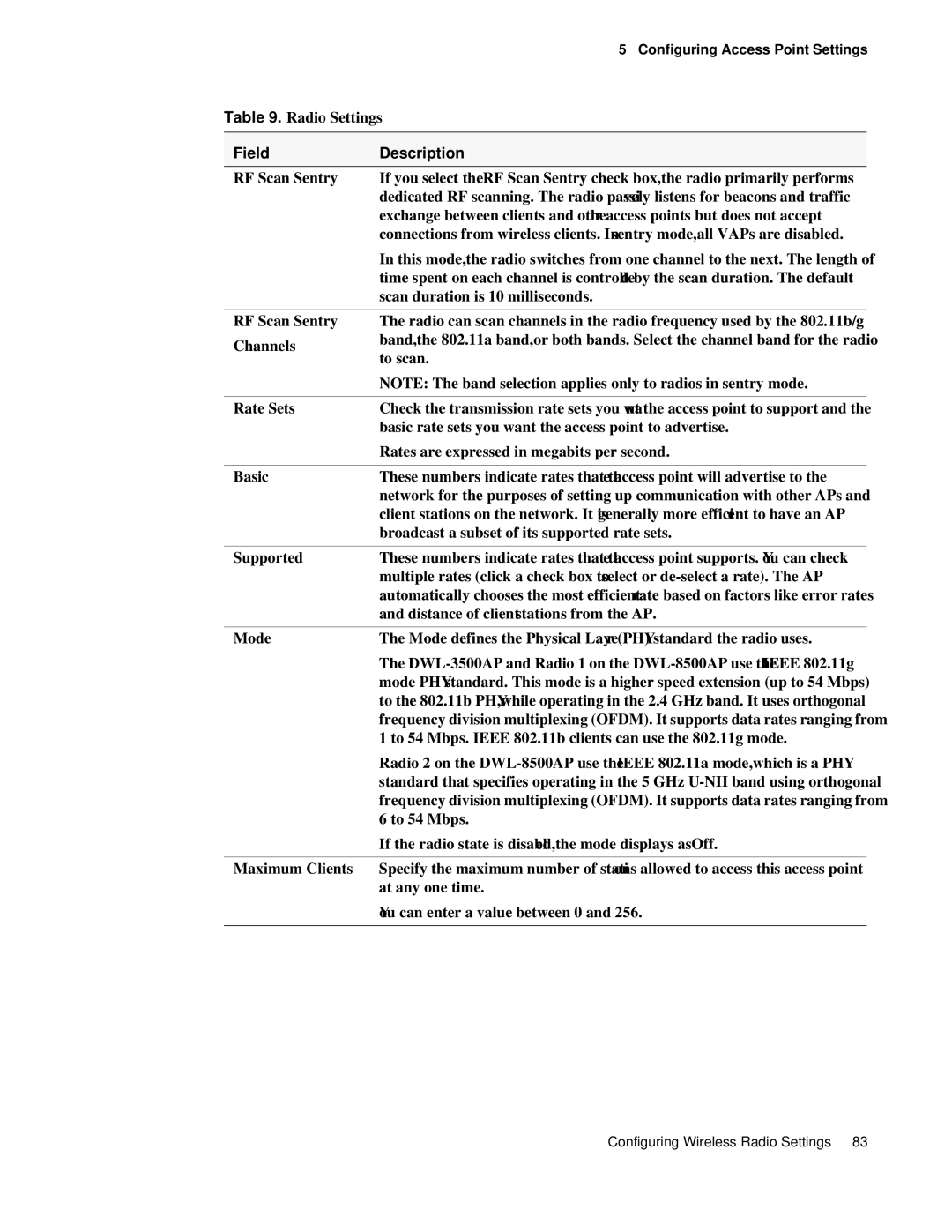5 Configuring Access Point Settings
Table 9. Radio Settings
Field | Description | |
RF Scan Sentry | If you select the RF Scan Sentry check box, the radio primarily performs | |
| dedicated RF scanning. The radio passively listens for beacons and traffic | |
| exchange between clients and other access points but does not accept | |
| connections from wireless clients. In sentry mode, all VAPs are disabled. | |
| In this mode, the radio switches from one channel to the next. The length of | |
| time spent on each channel is controlled by the scan duration. The default | |
| scan duration is 10 milliseconds. | |
|
| |
RF Scan Sentry | The radio can scan channels in the radio frequency used by the 802.11b/g | |
Channels | band, the 802.11a band, or both bands. Select the channel band for the radio | |
to scan. | ||
| ||
| NOTE: The band selection applies only to radios in sentry mode. | |
|
| |
Rate Sets | Check the transmission rate sets you want the access point to support and the | |
| basic rate sets you want the access point to advertise. | |
| Rates are expressed in megabits per second. | |
|
| |
Basic | These numbers indicate rates that the access point will advertise to the | |
| network for the purposes of setting up communication with other APs and | |
| client stations on the network. It is generally more efficient to have an AP | |
| broadcast a subset of its supported rate sets. | |
|
| |
Supported | These numbers indicate rates that the access point supports. You can check | |
| multiple rates (click a check box to select or | |
| automatically chooses the most efficient rate based on factors like error rates | |
| and distance of client stations from the AP. | |
|
| |
Mode | The Mode defines the Physical Layer (PHY) standard the radio uses. | |
| The | |
| mode PHY standard. This mode is a higher speed extension (up to 54 Mbps) | |
| to the 802.11b PHY, while operating in the 2.4 GHz band. It uses orthogonal | |
| frequency division multiplexing (OFDM). It supports data rates ranging from | |
| 1 to 54 Mbps. IEEE 802.11b clients can use the 802.11g mode. | |
| Radio 2 on the | |
| standard that specifies operating in the 5 GHz | |
| frequency division multiplexing (OFDM). It supports data rates ranging from | |
| 6 to 54 Mbps. | |
| If the radio state is disabled, the mode displays as Off. | |
|
| |
Maximum Clients | Specify the maximum number of stations allowed to access this access point | |
| at any one time. | |
| You can enter a value between 0 and 256. | |
|
|
Configuring Wireless Radio Settings 83
